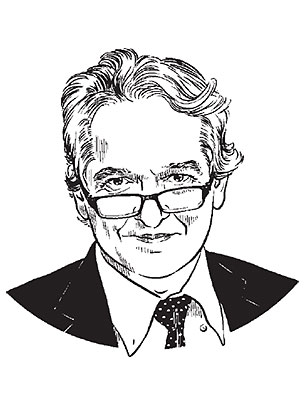What does the future of money look like, Aleksander Berentsen?
Text: Aleksander Berentsen
The money economy is currently undergoing a period of rapid change, thanks to digitization. Cash as we know it will disappear. But what consequences is that going to have?
We can already say for certain that money in the future will be virtual money. What that means for people is that physical money – cash – will disappear. In future, all payments will be made using mobile phones, smart watches or other gadgets. Actually, this is a pity, as cash has many desirable qualities that cannot be replicated by virtual money. Cash is represented by a physical object, usually a coin or bill. The owner of a cash unit is automatically the owner of the value unit to which it relates. This means that ownership rights to the cash units that circulate freely in the economy are always clearly established, without the need for recordkeeping. What is more, the persons involved can remain anonymous and do not require a permit to use cash.
Virtual money, by contrast, has no physical representation. It exists only as an accounting entry. When a payment is made, the accounts are adjusted by deducting the amount paid from the purchaser and crediting it to the seller. For a virtual currency to function, it must be clear at all times how many monetary units there are and how new units are created. In addition, there needs to be a consensus mechanism to ensure that participants are in agreement at all times about the ownership of the virtual monetary units. monetary units. A consensus about these rights of ownership can be achieved using two kinds of technology; essentially, one centralized and the other decentralized.
In a traditional electronic payments system, a central authority – normally a bank – keeps accounts for buyers and sellers. However, centralized payment systems have numerous disadvantages. Large amounts of data are collected about users, and a user can be locked out at any time. Users’ accounts can also be accessed at any time – an all-too-frequent occurrence in countries with dubious legal systems.
Bitcoin is the first functioning virtual currency where ownership rights to the different monetary units are administered on a decentralized basis. There is no central authority, no boss, no management even – and yet it works. The payment system uses a form of decentralized recordkeeping called bitcoin blockchain. It would take too long to describe this mechanism in detail, but it should be clear that administering digital property on a decentralized basis represents a radical new departure. It has many potential applications even now, and there is no telling how it may be put to use in future.
How are new bitcoins created? They are produced by a process known as "mining", by analogy with digging for gold. In the same way as the Big Bang created gold from nothing, so to speak, bitcoins are produced from nothing. To make sure that too many bitcoins are not created, the developers have built in a requirement for "miners" to solve complex mathematical problems. The system is also calibrated in such a way that currently 12.5 new monetary units are produced, on average, every ten minutes. Some people may be disturbed to learn that bitcoins are created from nothing, but I would merely point out that the same is true of today’s Swiss franc. The Swiss National Bank, too, creates new money from nothing – and that has served us well so far.
More articles in the current issue of UNI NOVA.

